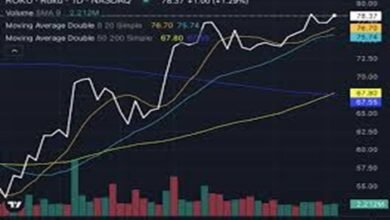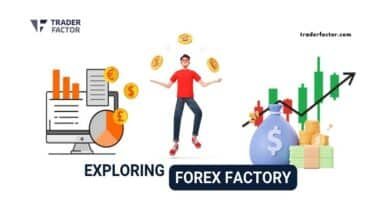Raw Brokerage: A Comprehensive Guide

Introduction
Raw brokerage is a term that has been gaining traction in the financial trading world, especially among traders who are looking for cost-effective ways to manage their investments. Unlike traditional brokerage services, raw brokerage offers a more stripped-down approach, focusing on providing direct market access with minimal intervention or added costs. This guide will take you through the fundamentals of raw brokerage, explaining what it is, how it works, and why it might be the right choice for your trading needs. Understanding raw brokerage is crucial for any investor looking to optimize their trading strategy and reduce costs.
What is Raw Brokerage?
Raw brokerage refers to a brokerage model where the broker provides direct access to the financial markets without adding any markup or spread to the trade execution. This means that traders can access the true market prices, often referred to as “raw” prices, directly from liquidity providers. The raw brokerage model is particularly appealing to active traders and professionals who require transparency and low-cost trading. By understanding the essence of raw brokerage, investors can make more informed decisions about their trading platforms and strategies.
How Raw Brokerage Differs from Traditional Brokerage
One of the key aspects to consider when exploring raw brokerage is how it differs from traditional brokerage models. In a traditional brokerage setup, the broker typically adds a spread or markup to the trades, which can increase the cost of trading. Raw brokerage, on the other hand, offers trading at market prices, with the broker charging a fixed commission instead. This distinction between raw brokerage and traditional brokerage is essential for traders who are looking to minimize their trading costs and gain a clearer view of the market.
The Benefits of Raw Brokerage
There are several benefits to using raw brokerage, making it an attractive option for many traders. Firstly, the transparency offered by raw brokerage means that traders can see the exact prices they are trading at, without any hidden fees or markups. This transparency can lead to better decision-making and more accurate trading strategies. Additionally, raw brokerage often results in lower trading costs, as the fixed commissions are typically lower than the spreads added by traditional brokers. Understanding these benefits is crucial for anyone considering raw brokerage as their trading model.
Potential Drawbacks of Raw Brokerage
While raw brokerage offers numerous advantages, it’s important to be aware of the potential drawbacks as well. One of the main concerns with raw brokerage is that it may not be suitable for all types of traders, particularly those who are less experienced or prefer more support and guidance. Since raw brokerage often involves fewer services, traders may need to rely more on their own knowledge and skills. Additionally, while the costs are transparent, they are not necessarily lower for all trading volumes. Understanding these potential drawbacks can help traders make a more informed choice between raw brokerage and other models.
Who Should Consider Using Raw Brokerage?
Raw brokerage is not for everyone, and it’s important to determine if it’s the right fit for your trading style and goals. Raw brokerage is particularly well-suited for experienced traders who are comfortable with direct market access and prefer a no-frills trading experience. It’s also ideal for high-frequency traders who need low-cost and transparent pricing. However, if you’re new to trading or prefer a more hands-on approach from your broker, traditional brokerage services might be more appropriate. Evaluating your needs and trading objectives will help you decide if raw brokerage is the right choice for you.
How to Choose a Raw Brokerage Platform
Selecting the right raw brokerage platform is critical to your trading success. When choosing a raw brokerage platform, consider factors such as the platform’s reliability, the range of markets it offers, the commission structure, and the level of customer support. Additionally, it’s important to ensure that the platform provides access to the necessary trading tools and resources, such as advanced charting and analytical tools. By carefully evaluating these factors, you can choose a raw brokerage platform that aligns with your trading needs and helps you achieve your financial goals.
Comparing Raw Brokerage with ECN and STP Models
Raw brokerage is often compared to other direct market access models, such as ECN (Electronic Communication Network) and STP (Straight Through Processing). While all three models offer transparency and access to market prices, there are key differences. ECN brokers facilitate trades between market participants without taking the opposite side of the trade, often resulting in lower spreads but higher commissions. STP brokers, on the other hand, send orders directly to liquidity providers, but may include a small markup. Understanding how raw brokerage compares with ECN and STP models can help traders choose the best option for their needs.
The Impact of Raw Brokerage on Trading Strategy
The choice of brokerage model can have a significant impact on your trading strategy. With raw brokerage, traders can develop strategies that are highly sensitive to market conditions, taking advantage of the transparency and lower costs. Scalping, for instance, becomes more feasible with raw brokerage due to the minimal spread and direct market access. However, it’s important to understand how raw brokerage may affect factors like liquidity and order execution speed. By considering these elements, traders can fine-tune their strategies to maximize the benefits of raw brokerage.
Cost Considerations in Raw Brokerage
One of the main reasons traders are attracted to raw brokerage is the potential for lower costs. However, it’s important to understand the full cost structure of raw brokerage. While there are no spreads or markups, traders must pay a fixed commission for each trade. Depending on the volume and frequency of trading, these commissions can add up. Additionally, traders should consider other costs such as platform fees, data subscriptions, and withdrawal fees. By carefully analyzing the cost considerations in raw brokerage, traders can make more informed decisions and optimize their trading budgets.
Legal and Regulatory Aspects of Raw Brokerage
When choosing a raw brokerage platform, it’s crucial to consider the legal and regulatory aspects. Raw brokerage platforms, like all financial services, must comply with regulations in the jurisdictions where they operate. Traders should ensure that their chosen platform is licensed and regulated by a reputable financial authority, which can provide a level of protection and oversight. Additionally, understanding the legal obligations and rights as a trader in a raw brokerage environment is essential to avoid potential disputes and ensure a safe trading experience.
The Future of Raw Brokerage
The financial trading industry is constantly evolving, and raw brokerage is expected to play a significant role in its future. As traders become more sophisticated and demand greater transparency, the appeal of raw brokerage is likely to grow. Advances in technology, such as AI-driven trading tools and blockchain, could further enhance the raw brokerage model by increasing efficiency and reducing costs. Understanding the trends and innovations shaping the future of raw brokerage can help traders stay ahead of the curve and capitalize on new opportunities in the market.
Conclusion
In conclusion, raw brokerage offers a unique and transparent approach to trading that can benefit a wide range of investors, particularly those who prioritize low costs and direct market access. By understanding what raw brokerage is, how it differs from traditional brokerage, and the benefits and drawbacks it offers, traders can make more informed decisions about whether this model is right for them. As the financial markets continue to evolve, raw brokerage is likely to become an increasingly popular choice, offering traders new opportunities to optimize their strategies and achieve their financial goals.
FAQs
1. What is raw brokerage?
Raw brokerage is a trading model where brokers provide direct access to market prices without adding any markup or spread, allowing traders to see true market prices and typically charging a fixed commission per trade.
2. How does raw brokerage differ from traditional brokerage?
Unlike traditional brokerage, where brokers add a spread or markup to trades, raw brokerage offers trades at market prices with a fixed commission, providing greater transparency and potentially lower trading costs.
3. What are the benefits of using raw brokerage?
The benefits of raw brokerage include transparency in pricing, lower trading costs, and direct market access, making it an attractive option for experienced and high-frequency traders.
4. Are there any drawbacks to raw brokerage?
Potential drawbacks of raw brokerage include a lack of additional services or support, which may not be suitable for beginner traders, and the possibility of higher costs for lower-volume traders due to fixed commissions.
5. How do I choose the best raw brokerage platform?
When choosing a raw brokerage platform, consider factors such as the platform’s reliability, commission structure, customer support, and the range of markets offered, ensuring it aligns with your trading needs and goals.





